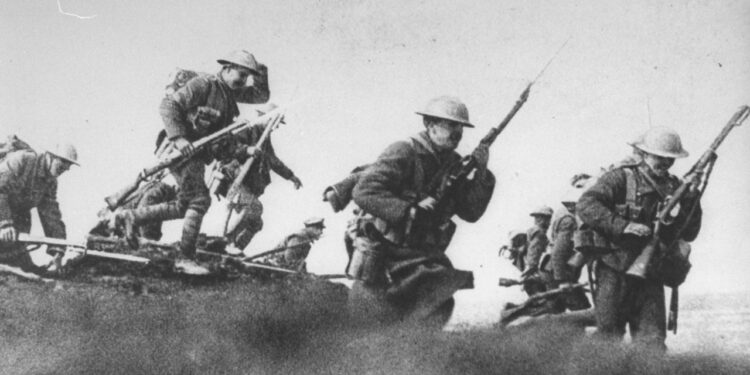The bloodiest day in British military history began 108 years ago today
On this day in 1916, the Battle of the Somme commenced with what would become the deadliest single day in British Army history. The opening assault on 1st July resulted in 57,470 British casualties, including 19,240 deaths, marking the beginning of a brutal five-month campaign that would claim over one million lives across all forces involved.
The Battle of the Somme represented one of the most devastating military offensives of the First World War, stretching from 1st July to 18th November 1916. What began as an ambitious Allied attempt to break through German defensive lines along the Western Front quickly devolved into a gruelling war of attrition that would forever alter military strategy and public perception of warfare.
The offensive was primarily a British-led operation under General Douglas Haig, designed to relieve pressure on French forces at Verdun whilst simultaneously attempting to achieve a decisive breakthrough against entrenched German positions. After seven days of intensive artillery bombardment intended to destroy German defences, British and French forces launched their assault across a 30-kilometre front along the River Somme in northern France.
The opening day proved catastrophic for British forces. Despite the prolonged artillery preparation, German defensive positions remained largely intact, with machine gun nests and barbed wire obstacles still operational. As waves of British soldiers advanced across no man’s land, they encountered withering machine gun fire that cut down entire battalions within minutes. The 46th North Midland Division suffered the lowest divisional casualties with 2,445 men lost, whilst the 56th London Division endured 4,314 casualties on that first day alone.
French forces operating south of the River Somme achieved greater success, partly due to more effective artillery coordination and tactical approaches developed through their earlier experiences at Verdun. However, these limited gains came at tremendous cost and failed to achieve the strategic breakthrough commanders had envisioned.
The battle continued for nearly five months, with both sides feeding fresh divisions into the meat grinder of trench warfare. By the time General Haig finally called off the offensive on 18th November 1916, weather conditions had deteriorated significantly, making further operations impossible. The final territorial gains amounted to a mere 13 kilometres of advance at maximum depth.
Casualty figures remain disputed amongst historians, but conservative estimates place total losses at over one million men. British Empire forces suffered approximately 420,000 casualties throughout the campaign, whilst French losses totalled around 200,000. German casualties proved equally staggering, with estimates ranging from 450,000 to 650,000 killed and wounded.
The Battle of the Somme fundamentally changed public attitudes towards the war, particularly in Britain, where entire communities lost their local battalions in single day’s fighting. The concept of “Pals Battalions” – units recruited from specific towns or professions – meant that some communities lost an entire generation of young men on 1st July 1916 alone.
Beyond its human cost, the battle demonstrated the futility of frontal assaults against entrenched positions equipped with modern weaponry. Military commanders gradually recognised that breakthrough tactics required more sophisticated coordination between artillery, infantry, and emerging technologies such as tanks, which made their combat debut during the later stages of the Somme offensive.
REFH – newshub finance



Recent Comments